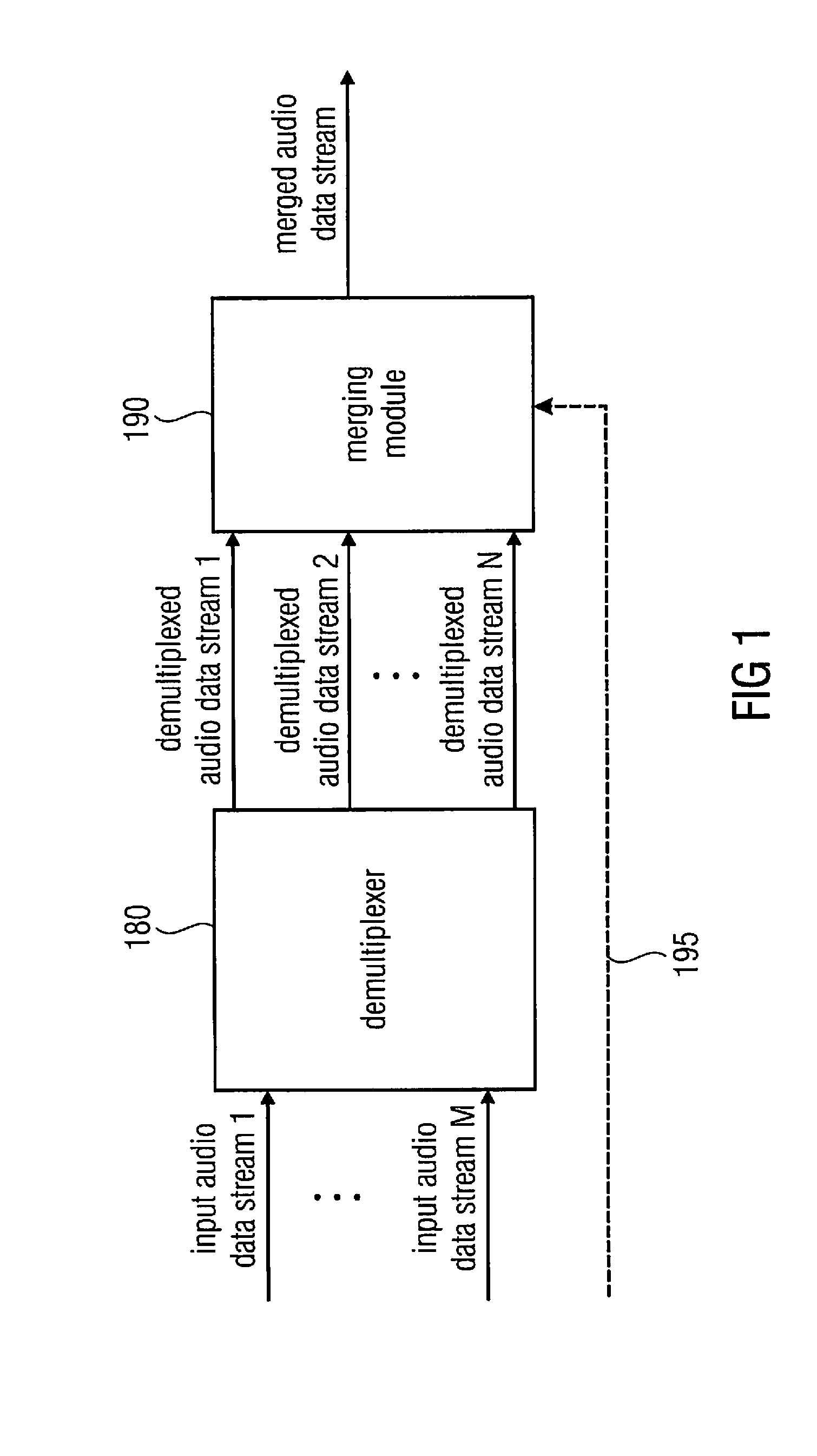Apparatus and method for merging geometry-based spatial audio coding streams
a spatial audio and coding stream technology, applied in the field of audio processing, can solve the problems of difficult to obtain from a complex sound scene recorded with a few microphones, inability to modify, and inability to obtain the loudspeaker signals, so as to reduce the computational cost of synthesis and reduce the network traffic
- Summary
- Abstract
- Description
- Claims
- Application Information
AI Technical Summary
Benefits of technology
Problems solved by technology
Method used
Image
Examples
Embodiment Construction
[0091]Before providing a detailed description of embodiments of the present invention, an apparatus for generating an audio output signal of a virtual microphone is described to provide background information regarding the concepts of the present invention.
[0092]FIG. 12 illustrates an apparatus for generating an audio output signal to simulate a recording of a microphone at a configurable virtual position posVmic in an environment. The apparatus comprises a sound events position estimator 110 and an information computation module 120. The sound events position estimator 110 receives a first direction information di1 from a first real spatial microphone and a second direction information di2 from a second real spatial microphone. The sound events position estimator 110 is adapted to estimate a sound source position ssp indicating a position of a sound source in the environment, the sound source emitting a sound wave, wherein the sound events position estimator 110 is adapted to estim...
PUM
 Login to View More
Login to View More Abstract
Description
Claims
Application Information
 Login to View More
Login to View More - R&D
- Intellectual Property
- Life Sciences
- Materials
- Tech Scout
- Unparalleled Data Quality
- Higher Quality Content
- 60% Fewer Hallucinations
Browse by: Latest US Patents, China's latest patents, Technical Efficacy Thesaurus, Application Domain, Technology Topic, Popular Technical Reports.
© 2025 PatSnap. All rights reserved.Legal|Privacy policy|Modern Slavery Act Transparency Statement|Sitemap|About US| Contact US: help@patsnap.com



